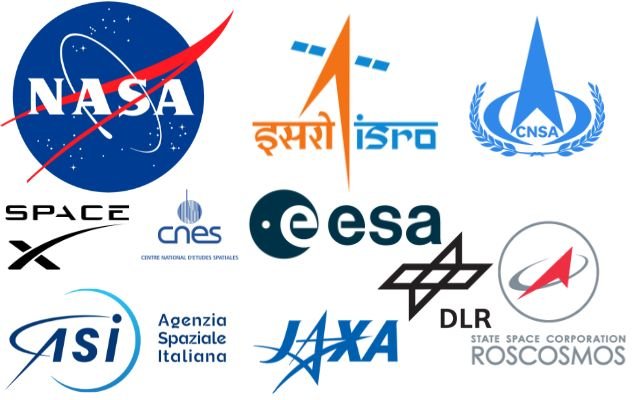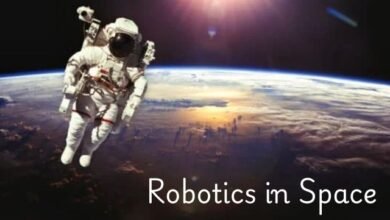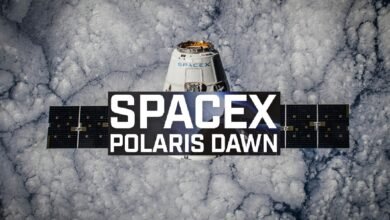10 Top Space Agencies Shaping Our Universe
Learn about the top 10 space agencies that are leading space exploration, improving technology, and shaping the future of space.

Space research has grown significantly in the last several years, concentrating on study of stars, planets, black holes, asteroids and other objects. There are roughly 72 space agencies in the world today, and many of them work together to exchange resources and expertise in order to achieve shared space objectives.
Some space organizations stand out due to their bigger expenditures, more successful missions and better achievements. Top 10 space agencies that have influenced our understanding of universe will be looked at in this article. These institutions have made major contributions to exploration of space’s mysteries and to our knowledge of it.
10 Space Agencies Leading the Way
| Space Agency | Country | Started | Budget (2023) | Main Achievements | Recent Achievements |
|---|---|---|---|---|---|
| NASA | USA | 1958 | $26.1B | Hubble Telescope, Mars missions, ISS, Voyager missions | Artemis program, Perseverance rover |
| ISRO | India | 1969 | $1.8B | Mars mission, 104 satellites in one launch | Chandrayaan-3, Gaganyaan |
| CNSA | China | 1993 | $13B | Space station, Moon and Mars missions | Tianwen-1, Chang’e 5 |
| ESA | Europe | 1975 | $8B | Saturn mission, future Jupiter and Mercury missions | Euclid telescope, ExoMars rover |
| ROSCOSMOS | Russia | 1992 | $4B | Mars exploration, ISS partnership | Luna-25 lander, ISS modules |
| SpaceX | USA | 2002 | Not confirmed | Reusable rockets, ISS missions, Mars plans | Starship development, Starlink satellite constellation |
| JAXA | Japan | 1993 | $2.5B | Asteroid missions, laser communication, NASA partnerships | Hayabusa2 mission, X-ray astronomy satellite |
| CNES | France | 1961 | $2.8B | Reusable rockets, collaboration with Germany | Ariane 6 rocket, Mars exploration |
| ASI | Italy | 1988 | $2B | ISS support, Mars orbiter | BepiColombo mission to Mercury, ExoMars rover |
| DLR | Germany | 1969 | $3B | Mars missions, solar power research | Solar Orbiter mission, ExoMars rover |
National Aeronautics and Space Administration (NASA)
The United States’ premier space organization, NASA was established in 1958. Its accomplishments in space exploration are well known around the world. NASA is independent agency that answers directly to President of the United States unlike other government agencies.
One of NASA’s greatest accomplishments, the Hubble Space Telescope, has greatly increased our understanding of planets, asteroids, and the universe. Furthermore, NASA oversaw several other fruitful programs, such the 1995 Galileo mission, which investigated Jupiter.
NASA plays a key role in the International Space Station (ISS) and is famous for the Voyager 1 and Voyager 2 missions. These spacecraft explored the outer planets—Jupiter, Saturn, Uranus and Neptune—and are now in interstellar space, continuing to send back data.
Indian Space Research Organisation (ISRO)
Indian Space Research Organisation (ISRO) is India’s top space agency established in 1969. It focuses mainly on exploring planets and plays a key role in space missions both within India and internationally.
In its early years, ISRO faced many challenges without support from other space agencies. However, that didn’t stop them from utilizing a straightforward setup that included coconut trees to launch Aryabhata, their first satellite! Considering its humble beginnings, ISRO accomplished incredible feats.
Being first nation to launch a satellite into Mars’ orbit on its first try was one of its greatest accomplishments. At a mere $75 million, Mars Orbiter Mission (Mangalyaan) is the most affordable space mission to date.
In 2017, ISRO broke another record by launching 104 satellites in a single mission using PSLV-C37 rocket. This showed the world ISRO’s expertise in creating innovative and cost-effective space programs.
ISRO’s focus on affordability and innovation has allowed India to stand out as a key player in global space exploration.
China National Space Administration (CNSA)
China National Space Administration (CNSA) is China’s national space agency, founded in 1993. It is essential to advancement of China’s space exploration initiatives. CNSA does not participate in cross-border cooperation with other space organizations, in contrast to a great deal of other space agencies. Notably, it has created its own smaller space station & is independent of the International Space Station.
Majority of CNSA’s space initiatives are being carried out independently, giving it complete autonomy over its goals & missions. With this strategy, agency can now work toward its space exploration objectives independently of outside partners.
Since 2003, the CNSA has successfully launched 11 astronauts into space as part of its human spaceflight program. The agency’s expertise & capacity for space exploration have greatly benefited from these missions. By advancing technology and undertaking research that deepens our understanding of space, CNSA is able to maintain its position as a major actor in the global space arena.
European Space Agency (ESA)
22 member states of the European Space Agency (ESA) which was established in 1975, individually contribute to the organization’s overall space exploration initiatives. By working together, ESA is able to leverage the knowledge and assets of several space organizations instead of depending only on one. Consequently, agency gains ability to oversee multiple space programs concurrently, augmenting its capacities & scope.
Mission of the European Space Agency (ESA) is to study the planets and moons of our solar system. The Cassini spacecraft was one of its primary missions; it arrived at Saturn in 2004. Since then, Cassini has returned insightful data about Saturn & its numerous moons, enabling us to getdeeper understanding of this far-off planet.
ESA has high goals for its next space missions. Projects to investigate Jupiter and Mercury, two of our solar system’s most fascinating planets, are planned by the organization. ESA also has a strong interest in studying galaxies other than our own and dark matter, a mystery component thought to be expanding the cosmos. ESA keeps contributing significantly to advancement of our knowledge of space & universe through these projects.
Russian Federal Space Agency (ROSCOSMOS)
Russian Federal Space Agency, or ROSCOSMOS is a well-known space agency formed in 1992 after breakup of the Soviet Union. Unlike some agencies that focus on specific areas like planetary research, ROSCOSMOS handles wide range of space programs in Russia.
ROSCOSMOS works closely with other space agencies such as NASA, European Space Agency (ESA) and Indian Space Research Organisation (ISRO), sharing expertise and participating in joint missions.
Currently, ROSCOSMOS is focusing on Mars exploration, aiming to find evidence of life on the planet. They are also planning to establish human base on Mars, marking a major step in space exploration. Through these efforts, ROSCOSMOS continues to expand our knowledge of space and possibility of life beyond Earth.
SpaceX
Established: 2002
Annual Budget: Not confirmed
SpaceX, founded by Elon Musk in 2002 is a private space company that made history by becoming first to launch satellites into Earth’s orbit. Competing with government agencies is tough but Musk’s team has achieved many impressive milestones.
A major breakthrough for SpaceX is development of reusable rockets which can return to Earth and be used again, making space travel much cheaper. These rockets are used to transport equipment and astronauts to International Space Station (ISS) & other missions.
SpaceX is now focused on exploring Mars, aiming to send humans there by 2026. Their goal is to make humans a multiplanetary species, paving way for future space exploration.
Japan Aerospace Exploration Agency (JAXA)
Established: 1993
Annual Budget: $2.03 billion (2013)
Japan is known for its technology and space programs with Japan Aerospace Exploration Agency (JAXA) playing key role. Formed in 1993, JAXA focuses on exploring asteroids and Moon, helping advance space knowledge.
JAXA also develops advanced satellites used by space agencies worldwide, improving global space research. Currently, JAXA is working with NASA on projects like Global Precipitation Measurement Core satellite and Aqua Earth Observations Satellite which monitor Earth’s water cycles.
JAXA is also studying new Laser Communication System with Sony to improve data transmission in space. This could make space-to-Earth communication faster & more efficient.
JAXA’s work including its collaborations and innovations, highlights Japan’s dedication to space exploration and research.
National Center for Space Studies (CNES) – France
National Center for Space Studies (CNES) is France’s national space agency, formed in 1961. It represents France within European Space Agency (ESA) and is headquartered in Paris, operating under supervision of French Defense Ministry. Initially, agency focused on astronaut training for ESA missions. However, over time, CNES expanded its role to concentrate on several key areas such as defense, scientific research, technology development and sustainable management of resources.
Currently, CNES is working to reduce the costs of space programs by developing reusable rockets powered by methane. These rockets could significantly lower expense of future missions. CNES is collaborating with Germany to advance this reusable rocket technology, contributing to Europe’s future in space exploration.
Italian Space Agency (ASI)
Italian Space Agency (ASI) has played important role in space exploration since it launched its first satellite, San Marco 1, in 1964. Although agency formally came into existence in 1988, its roots in space research stretch back decades. ASI launched its first major satellite, BeppoSAX, in 1996 which helped to improve our understanding of the universe. Since then, agency has been involved in many international space programs including XMM-Newton, Mars Reconnaissance Orbiter and Venus Express.
One of ASI’s most important contributions is Multi-purpose Logistics Module, cargo system used to transport and store equipment for International Space Station (ISS) playing a key role in supporting space missions.
- The Science Behind Sleep: Why You Need It
- 7 Common Myths About Black Holes Debunked
- Everything you know about space is wrong
German Aerospace Center (DLR)
German Aerospace Center (DLR) is leading organization in space exploration and technology development in Germany. Since its founding in 1969, DLR has launched several notable space missions including Galileo (a global navigation satellite system), Mars Express and Shuttle Radar Topography Mission. Beyond space missions, DLR also focuses on power generation with low carbon dioxide emissions, exploring solar-powered technologies and developing sustainable energy solutions.
DLR is not just about space exploration—it also works on environmental protection, transportation safety and conserving natural resources. Agency operates on behalf of the German Federal Government and plays a critical role in advancing both space and Earth-related technologies.



